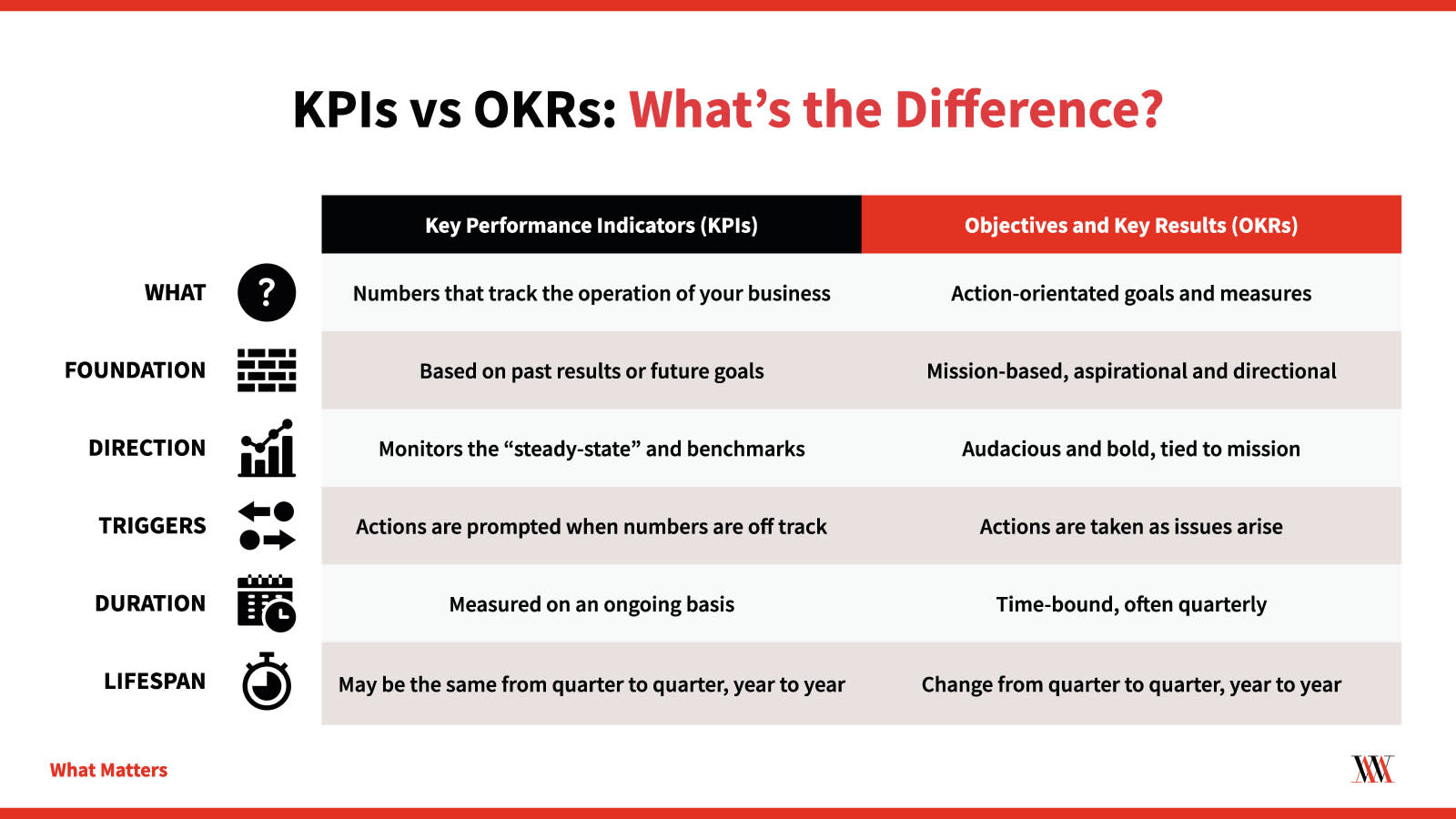Decoding KPIs & OKRs
Aug 1, 2023
In the realm of performance management, two terms often dominate the conversation: KPIs and OKRs. These acronyms, standing for Key Performance Indicators and Objectives and Key Results respectively, are pivotal players in directing an organization's forward trajectory. Many grapple with the question of whether one is superior to the other. However, a more nuanced understanding reveals that they can coexist and even complement each other. Decoding KPIs & OKRs
Before delving into the battle between KPIs vs. OKRs, it's essential to understand what each of these terms signify.
Demystifying KPIs
KPIs or Key Performance Indicators are metrics that quantify the effectiveness of an organization in achieving its strategic and operational goals. KPIs are numbers that provide a snapshot of performance, but they often lack the context or direction for future action.
Consider, for instance, a museum that uses visitor count and donations as its KPIs. While these numbers offer an insight into its current state, they do not provide a roadmap for future growth or engagement.
Unraveling OKRs
On the other hand, OKRs (Objectives and Key Results) are more holistic. They not only provide a numerical measure but also offer a clear path for future action. In our museum example, an OKR could be increasing the count of local visitors by 30% and organizing two community events to attract new local donors. This OKR provides a clear objective (increasing local engagement) and measurable key results (visitor count and community events).

KPIs vs. OKRs: The Distinct Differences
The distinction between KPIs and OKRs lies in their approach towards goal-setting and measurement. KPIs are essentially snapshots of an organization's current performance. They are metrics that measure the status quo but do not provide a roadmap for future action.
In contrast, OKRs are the roadmap. They provide the destination (objective) and the steps to get there (key results). They are tools for strategic planning and execution, helping organizations navigate towards their goals.
KPIs vs. OKRs: An Illustrative Example
Consider an online business that aims to maintain a website uptime of 99%. This metric is a KPI, representing a critical standard to uphold. However, if the website is frequently down and needs improvement, the same metric could morph into an OKR. In this scenario, the objective would be to "improve the website," and the key result would be to "increase website uptime."
Can KPIs Fail?
KPIs can indeed fail, especially when they are not used correctly. Here are some reasons why KPIs might falter:
Excessive KPIs
It's common to find organizations tracking a plethora of KPIs. However, they often overlook the most significant metrics that could drive meaningful change. Having too many KPIs can dilute focus and hinder progress.
High-level KPIs
Sometimes, KPIs are too detached from the team's day-to-day operations. If the KPI doesn't affect the team's work directly, it might not spur the desired change.
Inadequate Data or Tracking
Choosing the wrong metric or not having a robust system to capture accurate, regular measurements can undermine the effectiveness of KPIs.
Box-Ticking Exercise
KPIs lose their power when they are tracked just for the sake of reporting or performance management. KPIs should stimulate discussions about progress and solutions, not merely act as a checkbox exercise.
Can OKRs Replace KPIs?
While OKRs provide strategic direction, KPIs are essential for tracking the vital elements of an organization. KPIs can occasionally inform OKRs, especially when there's a need for substantial change in the metric. However, it's crucial to remember that OKRs are about the future, not the present state of affairs.
A finance team, for instance, might elevate their KPI of "contract filing within a stipulated time" to an OKR to draw attention and improve. Once the team consistently meets the objective, it can revert to being a KPI, thus monitoring it without making it the central focus.
Can KPIs and OKRs Co-exist?
KPIs and OKRs can indeed coexist. While KPIs are health metrics reflecting the organization's current state, OKRs represent the most critical future milestones. They can work in tandem to drive an organization towards its goals.
Consider the example of the team tasked with fixing the healthcare.gov website. Their objective was clear: "Fix healthcare.gov for the majority of consumers." They adopted KPIs as their key results, which in this scenario, were aspirational targets.
Common Mistakes with KPIs & OKRs
Like any tool, KPIs and OKRs can be misused or misinterpreted, leading to errors. Here are some common mistakes to avoid:
With KPIs
Treating KPIs as standalone goals or targets
Focusing on lagging indicators rather than leading ones
Measuring the wrong thing because it's easier
With OKRs
Tunnel vision about metrics
Failing to differentiate between committed and aspirational OKRs
Setting low-value objectives
To learn more about KPIs, OKRs, and goal setting, consider enrolling in Gigantic's course on Product Leadership, where you can gain insights from leaders at progressive companies.
Ready to dive deeper? Check out our Product Strategy & Leadership course for lot more lessons and templates on setting KPIs.



